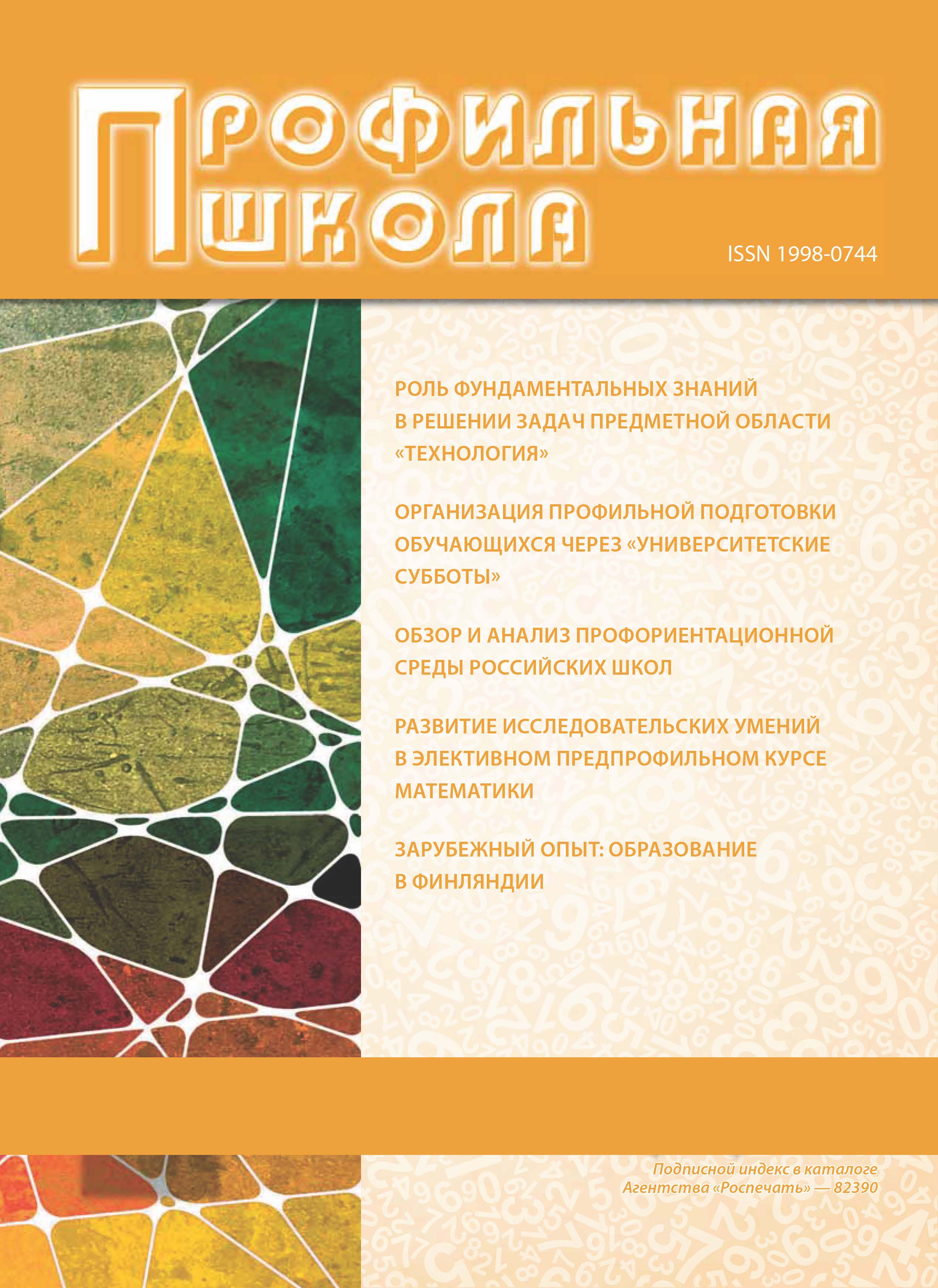Moskva, Moscow, Russian Federation
The article considers the problem of diagnosing individual characteristics of students’ knowledge. It is shown that an adequate model for knowledge representation is the model of frames. The article describes the psychological processes underlying the formation of frames, and the role of implicit processes in the development of cognitive representation of the world in the mind of the student. Frames of diff erent are classifi ed, its brief descriptions are provided, essential features are highlighted, the role of frames as a way of presenting various components of training content is described. It is shown that adequate means of diagnostics of basic frames formation is the method of mind mapping. A specifi c example describes all the stages of building mind maps. The paper analyzes the features of mind maps, which allow interpreting them as a visual image of individual frames. Examples of students’ mind maps, confi rming the validity of this conclusion, are provided.
frame, frame types, cognitive scheme, implicit training, associative connections, visualization of mental representations, mind maps, building mind maps.
Одной из главных причин затруднений, возникающих у школьников при усвоении математики, информатики и естественно-научных предметов, является существенное различие между структурой и способом развития содержания обучения и структурой индивидуального знания и теми когнитивными инструментами, которые используются учащимися для ее построения и развития. Упомянутые выше предметы являются упрощенными и сокращенными версиями некоторых математических, логических и естественных теорий, имеющих аксиоматическую или гипотетико-дедуктивную структуру. В ее основе лежит либо система аксиом, к которой предъявляется требование непротиворечивости, полноты и независимости, либо система принципов, являющихся теоретическими обобщениями эмпирических данных. Дальнейшее развитие теории осуществляется путем логического вывода теорем и следствий, которые в случае естественнонаучного знания должны быть подтверждены экспериментально. Таким образом, одним из основных инструментов развития научного знания оказывается формальная логика.
1. Prokhorov A.M. Bol’shoy entsiklopedicheskiy slovar’ [Great Encyclopedic Dictionary]. Moscow, Sovetskaya entsiklopediya Publ., 1993. 1456 p.
2. B’yuzen T. i B. Supermyshlenie [Superthinking]. Minsk, Popurri Publ., 2007, p. 224.
3. Gorelov I.N., Sedov K.F. Osnovy psikholingvistiki [Fundamentals of psycholinguistics]. Moscow, Labirint Publ., 1998. 256 p.
4. Goroshko E.I. Integrativnaya model’ svobodnogo assotsiativnogo eksperimenta [Integrative model of free association experiment]. Moscow, Khar’kov, Ra-Karavella Publ., 2001. 320 p.
5. Luriya A.R. Yazyk i soznanie [Language and consciousness]. Moscow, 1979. 320 p.
6. Minskiy M. Freymy dlya predstavleniya znaniy [Frames for knowledge representation]. Moscow, Energiya Publ., 1979. 151 p.
7. Ishlinskiy A.Yu. Politekhnicheskiy slovar’ [Technical Dictionary]. Moscow, Sovetskaya entsiklopediya Publ., 1989. 656 p.
8. Usova A.V. Formirovanie u shkol’nikov nauchnykh ponyatiy v protsesse obucheniya [Formation at pupils of scientific concepts in the learning process]. Moscow, Pedagogika Publ., 1986. 176 p. EDN: https://elibrary.ru/UAMKKH
9. Khegenkhan B., Olson M. Teorii naucheniya [learning theory]. St. Petersburg, Piter Publ., 2004. - 474 s.
10. Kholodnaya M.A. Psikhologiya intellekta: paradoksy issledovaniya [Psychology of intelligence: the paradoxes of the study]. Tomsk, Izd-vo Tom. un-ta Publ. Moscow, Bars Publ., 1997. 392 p. EDN: https://elibrary.ru/PYANJX
11. Hebb D.O. The organization of behavior: A neuropsychological theory. New York: John Wiley And Sons, Inc., 1949, 335 pages.






